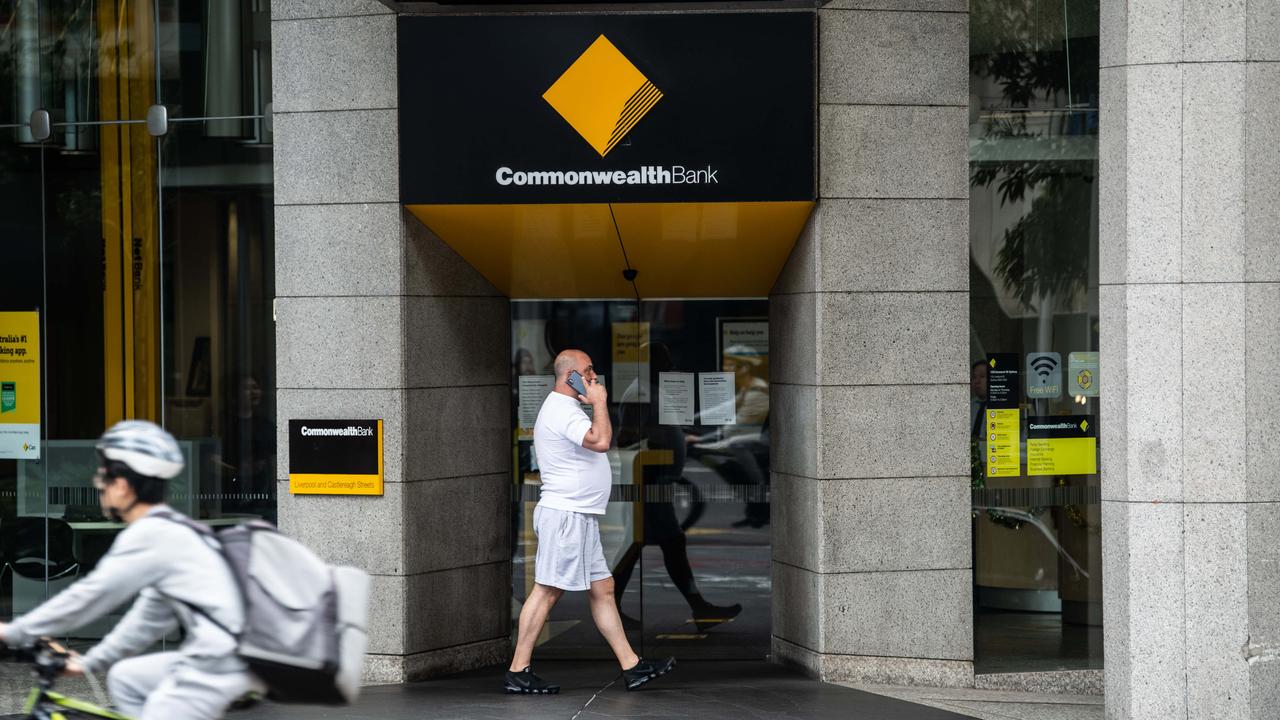Big banks’ deposit rate gamble could backfire, analysts warn
The big banks may have boxed themselves into a corner by lifting deposit rates, raising fears margins are falling.

The big banks may have boxed themselves into a corner by lifting deposit rates to reduce the fallout from depriving mortgage holders of the Reserve Bank’s full cut, raising fears margins are headed south quickly unless the gift to savers is quickly unwound.
As political pressure mounted on the banks, analysts warned investors the “war for deposits” was intensifying and the big four’s margins would fare worse from their response to the RBA’s cash rate reduction.
It came as junior lender Suncorp joined the majors, passing on just 10 basis points to homeowners and increasing its 12-month term deposit rate to 3 per cent.
“The degree of disclosed rising term deposit rates exceed the ‘clawback’ on housing standard variable rates to the point where net interest margins (NIM) are likely negatively impacted,” CLSA analyst Brian Johnson said of the major banks.
He said bank earnings were now “negatively leveraged” to falling interest rates given they were five times more sensitive to deposit rates than wholesale funding, at a time when they were forced to lift deposit holdings to meet the looming “net stable funding ratio” (NSFR) rule.
Morgan Stanley analyst Richard Wiles agreed, noting CBA’s NIM would receive a five-basis- point boost from not passing on the full RBA cut to mortgage and business loan customers.
But CBA would suffer a six basis point hit to margins from increasing term deposit rates.
“The combination of another rate cut and CBA’s response puts downward pressure on margins, and the risk of a resumption in the ‘war on deposits’ is growing,” Mr Wiles said ahead of CBA’s expected $9.5 billion profit next week.
The concerns flowed through the market, where investors lopped almost 3 per cent off National Australia Bank shares to $25.84 as Westpac slumped 2.56 per cent to $30.06.
CBA fell 2.05 per cent to $76.03 while ANZ ended down 1.98 per cent to $25.23.
The smaller regional banks, which rely more heavily on deposits for funding, were also caught in the rout, with Bendigo and Adelaide Bank closing down 3.04 per cent and Bank of Queensland falling 2.27 per cent.
While noting stronger competition for deposits was inevitable ahead of the NSFR in 2018, Macquarie analyst Victor German said fears about the hit to profits from this week’s term deposit increases may be overdone as the banks could unwind them “over time”.
Credit Suisse agreed, noting: “The move could be part of a short-term marketing campaign to make the mortgage repricing more politically palatable, with the changes to term deposit rates reversed in coming months.”
In March, Westpac quietly axed a range of term deposit offers unveiled in October to soften the fallout from the bank’s controversial out-of-cycle mortgage rate hike.
As expected, the big banks this week seized on the RBA’s 25 basis point cut to the cash rate to hold back 11-15 basis points from mortgage customers. But they also lifted one to three-year term deposit rates by up to 60 points, drawing mixed reactions.
“I thought it was a sign of weakness,” Charlie Aitken, the chief of boutique fund manager Aitken Investment Management, told Sky Business, adding he’d shorted CBA shares after the bank’s moves.
“I thought it was a sign the bank — perhaps it hasn’t got much growth — is probably a little bit worried about its deposit base and wholesale funding costs.”
Along with a softening revenue outlook as credit growth slows, banks are confronting a range of margin headwinds including intense lending competition and the NSFR, which requires them to reduce short-term wholesale funding sources and increase stable deposits.
After the banking regulator last year revealed the big banks might not easily meet the NSFR, analysts have grown concerned they will have to fight for deposits by offering more costly interest rates.
The banks already source about 60 per cent of funding from deposits. According to the RBA, the banking system is holding $525bn of term deposits, down from a peak of $547bn in August 2013 as falling rates force savers to move into riskier assets.
Morgan Stanley estimates about a third of the banks’ deposit funding is term deposits, with CBA holding the most at $140bn followed by Westpac’s $136bn, NAB’s $115bn and ANZ’s $68bn.
Mr Wiles said that CBA, the nation’s biggest lender, had only $35bn of term deposits maturing beyond one year.
According to comparison site Canstar, of the more than 100,000 people that have searched for a term deposit so far this year, products maturing up to and including 12 months were the most popular at 31 per cent of searches.
Mr Wiles said the banks’ increases on term deposit products maturing beyond one year showed they were trying to lengthen the duration of their funding ahead of the NSFR.
The NSFR headwind is compounded by the RBA’s cuts to the cash rate from 4.75 per cent in late 2011 to 1.5 per cent, a headwind banks in other countries have experienced as official rates neared zero.
“Falling interest rates are not good for banks as it is difficult to maintain deposit spreads as rates fall beyond a certain point — all the more so given the regulatory imperative to grow high-quality deposits faster than loans,” said Mr Johnson.
He also questioned whether the RBA’s cuts were even working any more and there was a risk that trying to lower the dollar with looser monetary policy could further ignite a housing bubble.





To join the conversation, please log in. Don't have an account? Register
Join the conversation, you are commenting as Logout